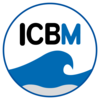Publications from the EcoMol Graduate Program
1. Degenhardt, J., et al., Seasonal Dynamics of Microbial Diversity at a Sandy High Energy Beach Reveal a Resilient Core Community. Frontiers in Marine Science, 2020. 7.
2. Degenhardt, J., et al., Cross-Shore and Depth Zonations in Bacterial Diversity Are Linked to Age and Source of Dissolved Organic Matter across the Intertidal Area of a Sandy Beach. Microorganisms, 2021. 9(8).
3. Dlugosch, L., et al., Significance of gene variants for the functional biogeography of the near-surface Atlantic Ocean microbiome. Nature Communications, 2022. 13(1).
4. Gerhard, M., C. Mori, and M. Striebel, Nonrandom species loss in phytoplankton communities and its effect on ecosystem functioning. Limnology and Oceanography, 2021. 66(3): p. 779-792.
5. Heinrichs, M.E., et al., An Advanced Protocol for the Quantification of Marine Sediment Viruses via Flow Cytometry. Viruses-Basel, 2021. 13(1).
6. Heinrichs, M.E., C. Mori, and L. Dlugosch, Complex interactions between aquatic organisms and their chemical environment elucidated from different perspectives, in YOUMARES 9 - The Oceans: Our Research, Our Future. Springer, Cham. , S. Jungblut, L. V., and M. Bode-Dalby, Editors. 2020. p. 279-297.
7. Heinrichs, M.E., et al., Impact of Viral Lysis on the Composition of Bacterial Communities and Dissolved Organic Matter in Deep-Sea Sediments. Viruses-Basel, 2020. 12(9).
8. Heyen, S., et al., Method development and validation for the quantification of organic acids in microbial samples using anionic exchange solid-phase extraction and gas chromatography-mass spectrometry. Analytical and Bioanalytical Chemistry, 2020. 412(27): p. 7491-7503.
9. Heyen, S., et al., Release of carboxylic acids into the exometabolome during anaerobic growth of a denitrifying bacterium with single substrates or crude oil. Organic Geochemistry, 2021. 154.
10. Hintz, N.H., Highlighting Theodor W. Engelmann's “Farbe und Assimilation”[Color and Assimilation]. Limnology and Oceanography Bulletin, 2021. 30(4): p. 121-126.
11. Hintz, N.H., et al., Ecological impacts of photosynthetic light harvesting in changing aquatic environments: A systematic literature map. Ecology and Evolution, 2022. 12(3): p. e8753.
12. Hintz, N.H., M. Zeising, and M. Striebel, Changes in spectral quality of underwater light alter phytoplankton community composition. Limnology and Oceanography, 2021. 66(9): p. 3327-3337.
13. Merder, J., et al., Dissolved organic compounds with synchronous dynamics share chemical properties and origin. Limnology and Oceanography, 2021. 66(11): p. 4001-4016.
14. Mori, C., et al., Biogeochemical thallium cycling during a mesocosm phytoplankton spring bloom: Biotic versus abiotic drivers. Geochimica Et Cosmochimica Acta, 2021. 313: p. 257-276.
15. Mori, C., et al., Biogeochemical cycling of molybdenum and thallium during a phytoplankton summer bloom: A mesocosm study. Marine Chemistry, 2021. 229.
16. Mori, C., et al., Non-conservative Behavior of Dissolved Organic Matter and Trace Metals (Mn, Fe, Ba) Driven by Porewater Exchange in a Subtropical Mangrove-Estuary [Original Research]. Frontiers in Marine Science,, 2019. 6.
17. Neun, S., et al., Phytoplankton Response to Different Light Colors and Fluctuation Frequencies. Frontiers in Marine Science, 2022. 9.
18. Oehler, T., et al., DSi as a Tracer for Submarine Groundwater Discharge. Frontiers in Marine Science, 2019. 6.
19. Petersen, L.-E., M.Y. Kellermann, and P.J. Schupp, Secondary Metabolites of Marine Microbes: From Natural Products Chemistry to Chemical Ecology, in YOUMARES 9 - The Oceans: Our Research, Our Future: Proceedings of the 2018 conference for YOUng MArine RESearcher in Oldenburg, Germany, S. Jungblut, V. Liebich, and M. Bode-Dalby, Editors. 2020, Springer International Publishing: Cham. p. 159-180.
20. Petersen, L.-E., et al., Rapid metabolome and bioactivity profiling of fungi associated with the leaf and rhizosphere of the Baltic seagrass Zostera marina. Marine Drugs, 2019. 17(7), 419.
21. Petersen, L.E., et al., Photosensitivity of the Bacterial Pigment Cycloprodigiosin Enables Settlement in Coral Larvae-Light as an Understudied Environmental Factor. Frontiers in Marine Science, 2021. 8.
22. Petersen, L.E., et al., Mono- and multispecies biofilms from a crustose coralline alga induce settlement in the scleractinian coral Leptastrea purpurea. Coral Reefs, 2021. 40(2): p. 381-394.
23. Schnaars, V., et al., What's the Difference? 2D DIGE Image Analysis by DeCyder (TM) versus SameSpots (TM). Journal of Molecular Microbiology and Biotechnology, 2018. 28(3): p. 128-136.
24. Schnaars, V., et al., Proteogenomic Insights into the Physiology of Marine,Sulfate-Reducing, Filamentous Desulfonema limicola and Desulfonema magnum. Microbial Physiology, 2021. 31(1): p. 36-55.
25. Wibowo, J. T., et al., Characterization of an insoluble and soluble form of melanin produced by Streptomyces cavourensis SV 21, a sea cucumber associated bacterium’. Marine Drugs, 2022, 20(1), 54.
26. Zielinski, O., et al., Assessing Fluorescent Organic Matter in Natural Waters: Towards In Situ Excitation-Emission Matrix Spectroscopy. Applied Sciences-Basel, 2018. 8(12).



